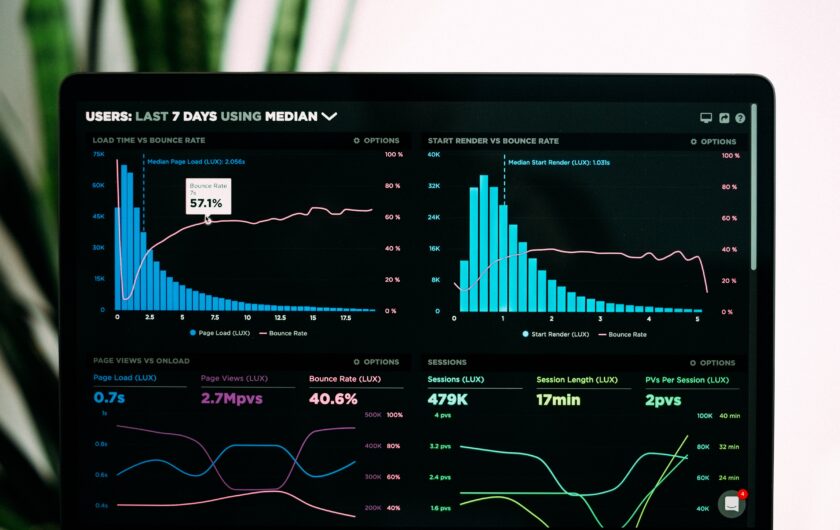Ideally, truth exists as a single universal concept that everyone knows and understands. However, it is not always simple to be united around a single truth. When it comes to performance marketing, having a solid sense of a source of truth (SOT) for campaigns and metrics of success is essential, but it takes effort and initiative to establish a SOT.
In this blog, we will discuss:
The definition of a SOT in performance marketing
Why a SOT is necessary
How to achieve an SOT
Guiding performance with a SOT
What is a Source of Truth in Performance Marketing
Reporting has improved but it’s missing a key feature. We noticed that overall, GA4’s reporting infrastructure has improved. Event tracking, enhanced analytics tools, and upgraded visual reporting has improved, which is great news for users. However, what’s missing is the ability to schedule and deliver reports that performance marketers, like Connexity, use for campaign optimization. Fortunately, we were able to work with Google’s engineering team directly to find a custom solution. Google and Connexity created a custom script file, which is now officially verified by Google, to create and deliver reports on behalf of retail advertisers. Our solution now supports the creation and delivery of the reports, functionality that is wholly absent in GA4.
It uses a Data-Driven Attribution model as its standard to track the customer journey. Google is now using this as its default attribution model that you can read more about here. In short, it’s algorithmic and black-box, so less predictable than UA’s last (indirect) click model. For example, we have observed that attribution often changes for different parts of the customer journey. The attribution model could use some more refinement, but we’re sure that Google is continuing to fine-tune it.
There’s less dependence on cookies for tracking. UA heavily relied on cookies to capture the same data, but it painted an incomplete picture of the user journey. GA4 now removes the dependence on cookies by using event tracking, machine learning, and cross-device tracking to capture user interactions as single “events” rather than sessions, which aligns to the latest privacy standards and the demise of third party cookies. This comes just in time as privacy is a growing concern and the industry is moving towards 1st-party data.
Why 60% of marketers rank SOT as the most important digital capability
Having a SOT is essential for marketers and to the success of the entire organization. “60% of people ranked SOT as the most important digital capability for their organization,” according to Salesforce. It is vital to develop a SOT across all business units, platforms, strategies and campaigns.
For marketers, leveraging marketing data spread among all channels and painting a complete, comprehensive picture is key. This brings up another challenge in itself. How do you connect the data points from different channels?
Upon analyzing the performance for a marketing campaign on one channel, you may ask yourself what is impacting the click-through rate, how much revenue is the content driving, and what is happening to the conversion rates? These questions are valid, but you must ask these questions across multiple channels and campaigns and connect the data. A holistic story of all the marketing channels and data is the goal. With that said, you cannot view channels or data separately; a siloed analysis will only give you one piece of the pie.
Creating a cohesive picture of the performance of multiple marketing channels and understanding how performance gains are attributed to each channel is necessary in today’s world where having an omnichannel presence is required to thrive. The average marketer uses 7.2 channels, according to Gartner. In most cases, the hope is that prospective customers will engage with multiple pieces of content, across multiple channels for a winning multitouch marketing strategy. Digital channels often measure metrics differently; thus, a SOT is crucial as you must have a unifying set of metrics to measure different channel performance against.
Achieving a SOT
The first step to a successful SOT is aligning your teams, budgets, and tools. Consolidation of systems and tools and eliminating legacy systems is a good first move. When having a copious amount of channels and campaigns, it may be advantageous to have a single repository of all your marketing data, so you can segment and analyze in one place. It is easier to identify a SOT in a unified platform as it enables everyone in your company to access data from a single point. With a single platform for all your channels and campaigns, there’s no more weaving together data from incongruous systems.
Ensuring sales and marketing operate as a single organism should be your next move. Historically, sales and marketing sit separately and all too often their goals are viewed in isolation. There must be a consolidated marketing and sales vision. A SOT must be achieved across both marketing and sales. The marketing and sales funnel needs to be analyzed together, not in a vacuum. An all-too-common example is marketing throws leads to sales, but that is where marketing’s involvement stops, and they never follow up with how those leads are flowing or not flowing in the sales funnel. Marketing must take an active role in the sales funnel and vice versa, all while ensuring that there is a consolidation of data across the sales and marketing funnel.
Most importantly, you need to define the metric that will count as your SOT. Is it new customer growth, a stable cost of sale, a ROAS target, an agreed upon attribution model, or maybe a combination of all of these? In order to define this, you must involve everyone to view and interact with the SOT, otherwise it will be a futile effort; people will speak different languages. Try creating a list of priority metrics and differentiating vanity metrics from more essential metrics.
Guiding Performance with a SOT
One way to better steer marketing performance is to use your model for marketing attribution to influence on-going campaign optimization. In this case attribution data is a primary SOT that drives future performance. If you are working with a performance marketing partner, it is important to communicate your vision for the SOT and leverage the partner’s expertise to help establish the key metrics that define success.
Connexity, the largest independent retail marketing platform, has experience in assisting leading brands and merchants in pinpointing SOTs for their performance marketing campaigns. We use the merchant’s own on attribution data as a key SOT. Purchase attribution data is a primary and necessary input Connexity uses to manage a merchant partner’s ecommerce campaign and to optimize growth. The data is a SOT for aligning conversions Connexity recognizes with how the merchant assigns value to additional shopper exposure we deliver with incremental offer placements.
Detailed attribution data is converted into signals that inform how Connexity bidding algorithms adjust in real-time to either deprioritize traffic placements with poor conversion performance or to increase bidding parameters in order to win competitive exposure with strong shopper intent. The attribution data is our source-of-truth to continually maximize budget performance across many diverse sources of shopper traffic and to ultimately deliver on our partner’s strategic campaign goals.
To learn more about how Connexity works with top retail companies and leverages attribution data as SOTs to maximize budget and campaign performance, fill out your information here.



